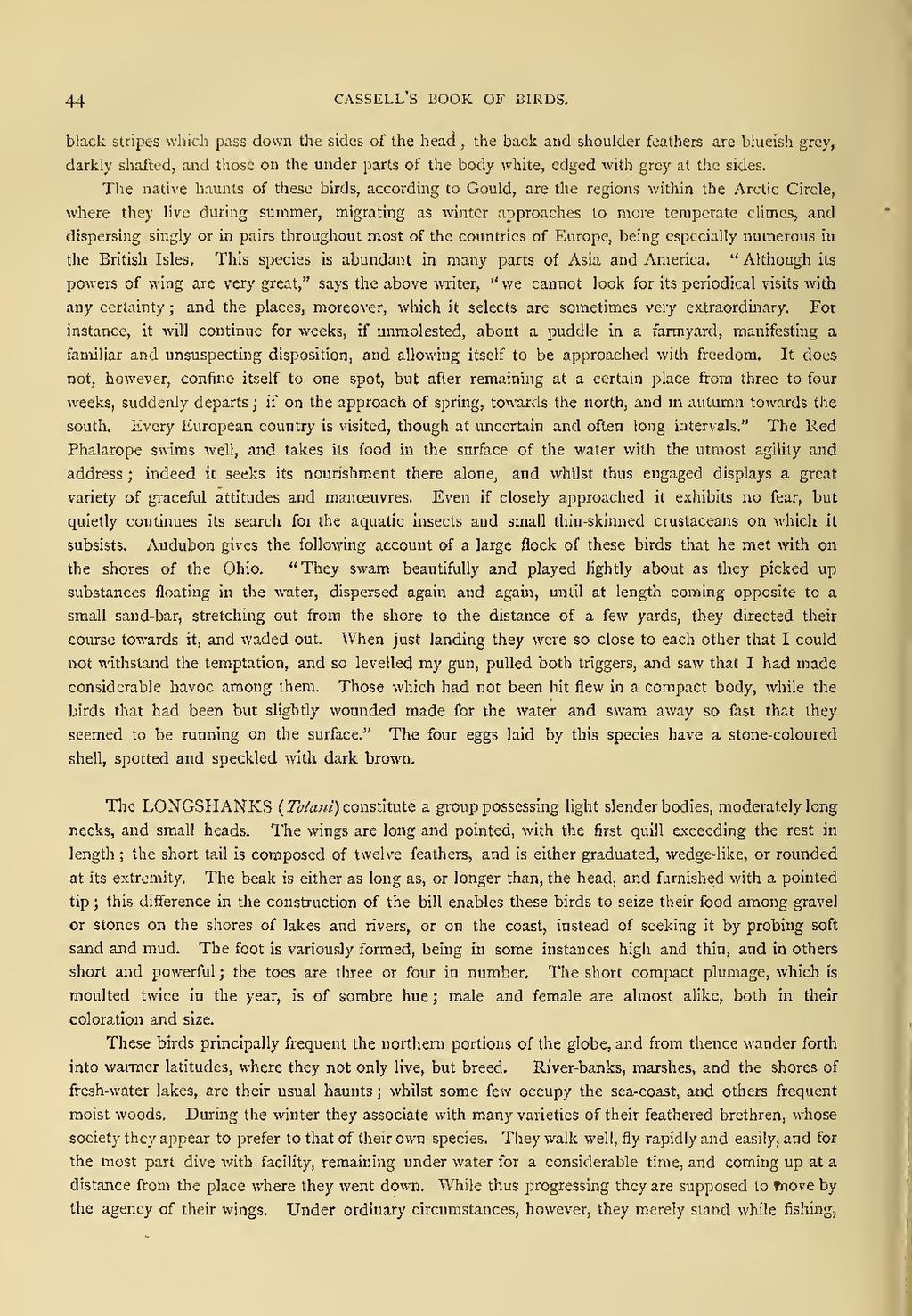black stripes which pass down the sides of the head, the back and shoulder feathers are blueish grey, darkly shafted, and those on the under parts of the body white, edged with grey at the sides.
The native haunts of these birds, according to Gould, are the regions within the Arctic Circle, where they live during summer, migrating as winter approaches to more temperate climes, and dispersing singly or in pairs throughout most of the countries of Europe, being especially numerous in the British Isles. This species is abundant in many parts of Asia and America. "Although its powers of wing are very great," says the above writer, "we cannot look for its periodical visits with any certainty; and the places, moreover, which it selects are sometimes very extraordinary. For instance, it will continue for weeks, if unmolested, about a puddle in a farmyard, manifesting a familiar and unsuspecting disposition, and allowing itself to be approached with freedom. It does not, however, confine itself to one spot, but after remaining at a certain place from three to four weeks, suddenly departs; if on the approach of spring, towards the north, and in autumn towards the south. Every European country is visited, though at uncertain and often long intervals." The Red Phalarope swims well, and takes its food in the surface of the water with the utmost agility and address; indeed it seeks its nourishment there alone, and whilst thus engaged displays a great variety of graceful attitudes and manœuvres. Even if closely approached it exhibits no fear, but quietly continues its search for the aquatic insects and small thin-skinned crustaceans on which it subsists. Audubon gives the following account of a large flock of these birds that he met with on the shores of the Ohio. "They swam beautifully and played lightly about as they picked up substances floating in the water, dispersed again and again, until at length coming opposite to a small sand-bar, stretching out from the shore to the distance of a few yards, they directed their course towards it, and waded out. When just landing they were so close to each other that I could not withstand the temptation, and so levelled my gun, pulled both triggers, and saw that I had made considerable havoc among them. Those which had not been hit flew in a compact body, while the birds that had been but slightly wounded made for the water and swam away so fast that they seemed to be running on the surface." The four eggs laid by this species have a stone-coloured shell, spotted and speckled with dark brown.
The LONGSHANKS (Totani) constitute a group possessing light slender bodies, moderately long necks, and small heads. The wings are long and pointed, with the first quill exceeding the rest in length; the short tail is composed of twelve feathers, and is either graduated, wedge-like, or rounded at its extremity. The beak is either as long as, or longer than, the head, and furnished with a pointed tip; this difference in the construction of the bill enables these birds to seize their food among gravel or stones on the shores of lakes and rivers, or on the coast, instead of seeking it by probing soft sand and mud. The foot is variously formed, being in some instances high and thin, and in others short and powerful; the toes are three or four in number. The short compact plumage, which is moulted twice in the year, is of sombre hue; male and female are almost alike, both in their coloration and size.
These birds principally frequent the northern portions of the globe, and from thence wander forth into warmer latitudes, where they not only live, but breed. River-banks, marshes, and the shores of fresh-water lakes, are their usual haunts; whilst some few occupy the sea-coast, and others frequent moist woods. During the winter they associate with many varieties of their feathered brethren, whose society they appear to prefer to that of their own species. They walk well, fly rapidly and easily, and for the most part dive with facility, remaining under water for a considerable time, and coming up at a distance from the place where they went down. While thus progressing they are supposed to move by the agency of their wings. Under ordinary circumstances, however, they merely stand while fishing,
